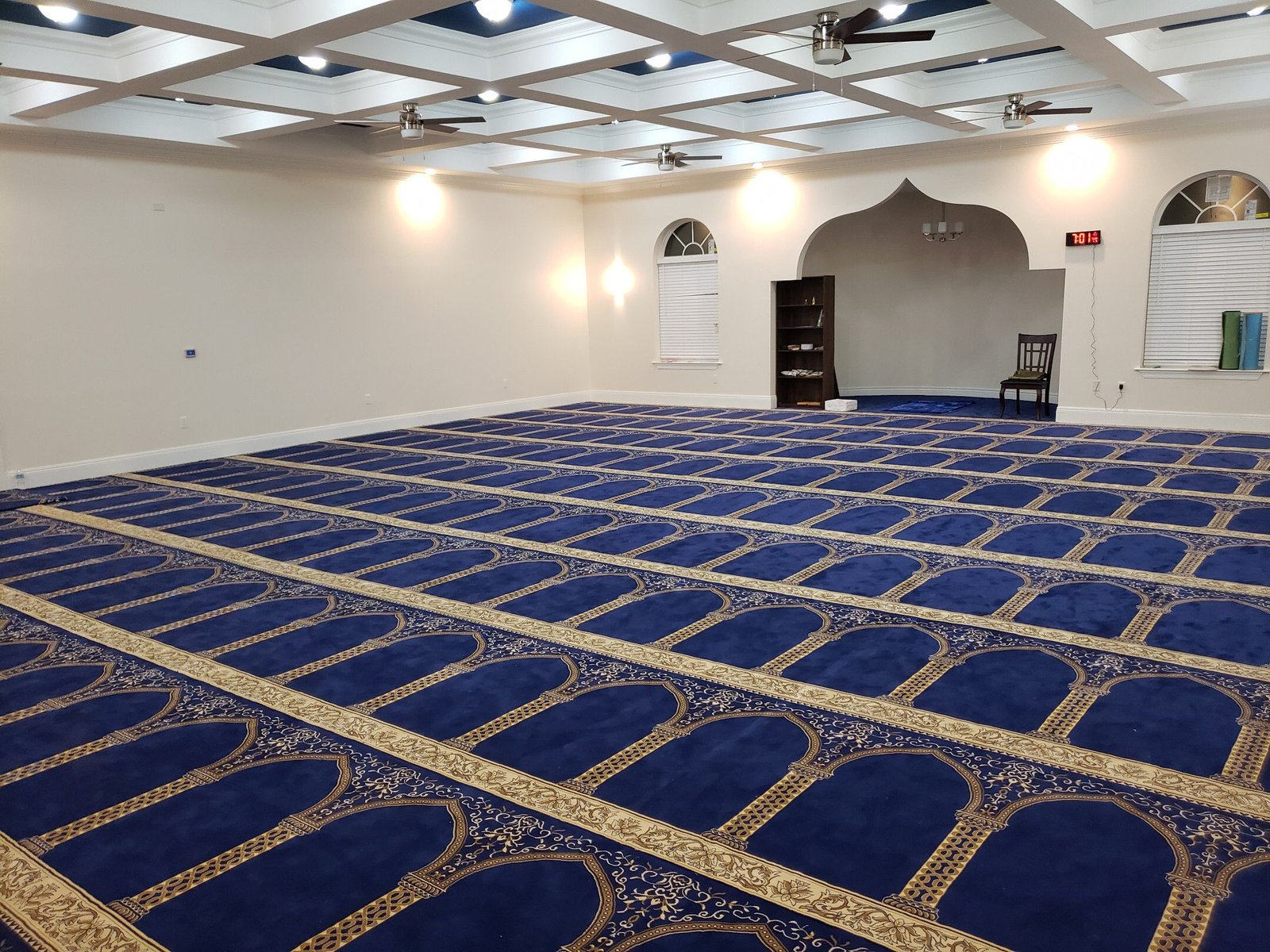
Mosques, as places of worship and community gathering, are central to the cultural and spiritual fabric of societies around the world. Every aspect of mosque design, including architecture, decoration, and furnishings, holds significance in creating a conducive environment for prayer and contemplation. Among these elements, mosque carpets stand out as not only functional floor coverings but also as symbolic expressions of cultural heritage and religious devotion.
Let’s delve into the intricate world of mosque carpets and explore their cultural elegance underfoot.
The Significance of Mosque Carpets
Mosque carpets, also known as prayer rugs, serve a dual purpose of providing comfort underfoot and demarcating spaces for prayer within the mosque. These carpets are meticulously crafted with intricate designs and patterns that hold symbolic meaning and cultural significance. Let’s unravel the layers of meaning behind mosque carpets:
1. Cultural Heritage
Mosque carpets are imbued with the rich cultural heritage of the regions where they originate. From the intricate motifs of Persian carpets to the geometric patterns of Turkish kilims, each design reflects the artistic traditions and craftsmanship of its cultural milieu. Through mosque carpets, generations of artisans have preserved and passed down cultural motifs and techniques, creating a tangible link to the past.
2. Spiritual Symbolism
The design elements of mosque carpets often incorporate symbolic motifs that hold deep spiritual meaning for worshippers. Common motifs include geometric patterns representing unity and harmony, floral motifs symbolising beauty and growth, and mihrab designs indicating the direction of prayer towards Mecca. These symbolic elements serve to enhance the spiritual atmosphere of the mosque and facilitate a deeper connection to the divine during prayer.
3. Ritual Importance
In addition to their symbolic significance, mosque carpets play a crucial role in Islamic rituals and practices. Muslims use mosque carpets as clean and comfortable surfaces for performing the ritual of Salat (prayer), which involves prostration and bowing towards the Kaaba in Mecca. The tactile experience of kneeling and bowing on the soft surface of a mosque carpet adds to the sensory richness of the prayer experience and fosters a sense of reverence and devotion.
Evolution of Mosque Carpet Designs
Over centuries of history, mosque carpet designs have evolved in response to changing cultural, artistic, and technological influences. While traditional handwoven carpets continue to hold sway in many mosques, modern advancements in textile manufacturing have introduced new possibilities for mosque carpet design and production. Let’s explore the evolution of mosque carpet designs:
1. Traditional Handcrafted Carpets
Traditional mosque carpets are often handmade using techniques passed down through generations of skilled artisans. These carpets feature intricate patterns and designs meticulously woven into the fabric using natural materials such as wool, silk, or cotton. Each carpet is a unique work of art, reflecting the aesthetic preferences and cultural identity of its makers.
2. Contemporary Machine-made Carpets
With the advent of industrialisation and modern manufacturing techniques, machine-made mosque carpets have become more prevalent in recent years. These carpets are mass-produced using automated processes, resulting in consistent quality and affordability. While some purists may prefer the authenticity of handmade carpets, machine-made mosque carpets offer practical advantages such as durability, ease of maintenance, and accessibility to a wider range of designs.
Choosing the Right Mosque Carpet
When selecting mosque carpets for a place of worship or cultural centre, several factors should be considered to ensure that they align with the cultural, aesthetic, and functional requirements of the space. Here are some key considerations:
1. Cultural Authenticity
Choose mosque carpets that honour and respect the cultural heritage and traditions of the community. Consider designs, motifs, and colour schemes that resonate with the cultural identity and values of worshippers.
2. Quality and Durability
Invest in high-quality mosque carpets that can withstand the rigours of daily use and maintain their beauty and functionality over time. Look for carpets made from durable materials and crafted with attention to detail and craftsmanship.
3. Size and Fit
Select mosque carpets that are appropriately sized to fit the prayer area and accommodate worshippers comfortably. Consider the layout and dimensions of the mosque space to ensure that the carpets enhance the aesthetic and functional aspects of the environment.
4. Maintenance and Care
Choose mosque carpets that are easy to clean and maintain to preserve their appearance and longevity. Consider factors such as stain resistance, anti-static properties, and ease of vacuuming or steam cleaning.
Conclusion
Mosque carpets are not merely floor coverings but embodiments of cultural heritage, spiritual symbolism, and artistic expression. From the intricate designs of Persian carpets to the geometric patterns of Turkish kilims, each mosque carpet tells a story of tradition, craftsmanship, and devotion. By understanding the significance and evolution of mosque carpets, communities can select carpets that honour their cultural identity and enrich the spiritual experience of worshippers.
So, the next time you step into a mosque and feel the soft embrace of a prayer rug beneath your feet, take a moment to appreciate the cultural elegance underfoot – for in every thread and motif lies a profound connection to tradition and faith.

